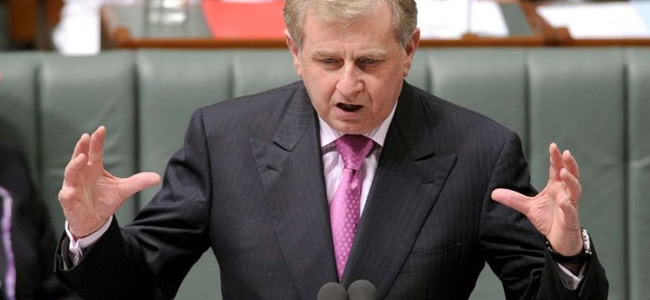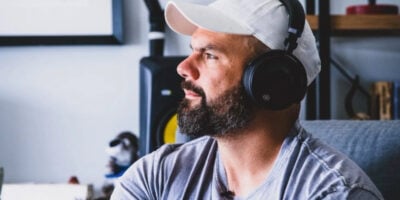The Federal Government’s long-awaited National Cultural Policy was unveiled yesterday, with Minister for the Arts Simon Crean revealing the government’s at the National Press Club in Canberra for Creative Australia, which will see $235 million in funding pumped into the arts sector as part of a ten year plan that includes a $75M overhaul to government grants board, the Australian Council for the arts.
Designed as a “policy that sees the artist at the centre of creativity. A policy that sees creativity as a crucial to the nation’s future,” in the words of Minister Crean, Creative Australia is described as a “vision that says that we have to invest in the artist.”
“We have to see the centrality of the artist but it isn’t just about the arts for art’s sake. It’s about economic development, and competitiveness,” added Minister Crean.
Despite funding being pumped into various arts, theatre, and film sectors, the direct implications of the National Cultural Policy for Australia’s music industry weren’t made entirely clear upon its announcement.
There is a $20.8 million pledge towards not-for-profit training organisations, including the Australian Youth Orchestra and National Academy of Music, and the new $8.1 million Creative Young Stars sceme, in which MPs will hold their own ‘talent quests’ to award young talent with grants; as well as re-announcing contemporary music funding, with $1.75 million going to Sounds Australia to help grow domestic and export markets, and $1.25 for ‘career pathways’ for musicians, with details still foggy.“I can understand the relentless cynicism from musicians, because they’ve been left out of the process for so long.” – John Wardle, Live Music Activist
Additionally the National Cultural Policy will invest $2.4 million over four years towards the Australian Music Radio Airplay Project (AMRAP), ensuring its survival after it was nearly run into the ground after it was left out of the Federal Government’s budget last year.
These initiatives have prompted mixed reactions from the music industry, with live music activist John Wardle – who is chairing the Sydney Lord Mayor’s new Live Music Taskforce – telling The Music: “I can understand the relentless cynicism from musicians, because they’ve been left out of the process for so long.”
Mr Wardle says the the Creative Australia policy provides good infrastructure, even if it doesn’t clearly put funding in the hands of music makers. “This isn’t cash in hand for artists, but it’s going to form a more nurturing environment for them in the future,” said Mr Wardle, “what we’ve got is a long-term structural plan.”
The recently appointed National Live Music Coordinator, Dr Ianto Ware has praised the National Cultural Policy, saying that it recognises the legislative issues facing live music venues such as planning permits and noise complaints, and that the Creative Australia vision will help ‘cut the red tape’.
“It’s so important that work is underway,” said Dr Ware of the spotlighting of the Policy of recognising how “planning and regulatory rules” can “present barriers” to Australia’s live music scene.
“This isn’t just a live music issue,” he continued, “regulation impacts on what people can do in public space, how they can use buildings and presents extremely high barriers for ARIs, smaller music venues, rehearsal and studio spaces.”
“It’s great to see a recognition of these things within the National Cultural Policy,” he added, “as they have historically been seen only as a planning and local government issue. I’m hopeful this will produce a more cross-disciplinary approach to adapting regulatory frameworks to enhance opportunities for creative activity, rather than repress them.”
Part of identifying and removing those legislative restrictions will come as a result of modernising the infrastructure of the Australia Council of the Arts, with $75.3 million dedicated to a dramatic overhaul of the grants council.
Described in the Creative Australia wording as making the Australia Council “a more nimble and responsive funding body with a clear mandate to support and promote a vibrant and distinctively Australian creative arts practice.”“Whilst we can not see any new money for contemporary music directly we are looking forward to the offer from the Australia Council for the industry to be consulted…” – Denise Foley, AMIN Chairperson
A figure of $60 million will go to ‘critical funding’ for artists and organisations, and $5 million for the major performing arts ‘excellence pool’ with states and territories providing the final $4 million towards a data collection program.
Australia Council Chair, Rupert Myer AM said he was “delighted that Creative Australia positions our organisation as a pivotal driver of the nation’s cultural future.” Applauding the National Cultural Policy’s funding initiatives following on from his comments that the body wants to eradicate the cliche of the ‘starving artist’.
Australian Music Industry Network Chairperson Denise Foley however, is keen to see just how the Arts Council shake-up will use its allocated funding to benefit live music. “Whilst we can not see any new money for contemporary music directly we are looking forward to the offer from the Australia Council for the industry to be consulted in how their new allocation of $75.3M will be allocated,” she told The Music.
“After a very long wait, it is fantastic to see the NCP finally being delivered,” she said. “It is fantastic to see that the [National Cultural Policy] has reinstated the funding to AMRAP, a vital resource in the contemporary music scene.”
Another facet of the National Cultural Policy is $8.5 million in extra funding for the recently reformed Creative Partnerships Australia body, to help advance expert advice and financial support provided to musicians and artists through innovative new schemes, in particular, crowdfunding.
“Artists no longer want just a grant, they want a platform to pitch their ideas and attract contributions – big or small – from large groups of people and organisations,” said Arts Minister Simon Crean, reflecting that getting artists to ask fans for backing and generate revenue was a strong step forward.
There’s already been major success stories in the crowdfunding boom, Perth’s Eskimo Joe used Pozible to fund their latest album, and smashed their crowdfunding target of $40,000, raising a total of $60,763, marking their project as the highest crowdfunding project in Australia.
Meanwhile the likes of Jen Cloher, live music guardians SLAM, and of course the controversial Amanda Palmer have all brought crowdfunding into the media spotlight through using it interesting new ways, while Sydney indie label Inertia have worked crowdsourcing platform Pledge Music into their roster’s record deals.
“Creative Partnerships will help arts organisations and artists, including musicians, understand how to make their projects work with crowdfunding,” says Minister Crean, who added that in some circumstances the Government might offer matched funding for projects that reach 50% of their budget from crowdfunding.
You can view the full Creative Australia – The New National Cultural Policy document here.

































